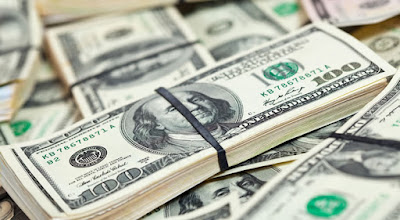Forex
The dollar remained broadly lower against the other major currencies on Tuesday, as investors remained cautious ahead of Friday’s speech y Federal Reserve Chair Janet Yellen.
Market participants are waiting to see if Yellen will restate the hawkish view of the economy expressed by Fed officials in recent weeks or echo the minutes of the Fed’s July meeting, which indicated that officials are divided on when to raise rates.
The dollar moved broadly higher after Fed Vice Chair Stanley Fischer said on Sunday that inflation is within “hailing distance” of the bank’s 2% target.
The comments came after speeches last week from San Francisco Fed head John Williams and New York Fed chief William Dudley indicating that the central bank thinks the economy is strong.
The U.S. Commerce Department reported on Tuesday that new home sales jumped by 12.4% to 654,000 units last month, compared to expectations for a 2.0% decline.
New home sales in June were revised down to 582,000 units, or a 1.7% gain, from the prior reading of a 3.5% increase to 592,000 units.
EUR/USD was steady at 1.1325, off session highs of 1.1355 after research group Markit reported that Germany’s manufacturing purchasing managers’ index slipped to a two-month low of 53.6 in August from 53.8 the previous month, confounding expectations for a slip to 53.5.
Germany’s services PMI fell to a 15-month low of 53.3 this month from 54.4 in July, compared to expectations for an unchanged reading.
Markit also said that the French manufacturing PMI ticked down to 48.5 in August from 48.6 last month, compared to expectations for a rise to 48.8.
The French services PMI rose to 52.0 this month from 50.5 in July, beating expectations for an unchanged reading.
For the entire euro zone, the composite PMI, which measures the combined output of both the manufacturing and service sectors ticked up to 53.3 in August from 53.2 in July, compared to expectations for a slip to 53.1.
GBP/USD gained 0.36% to trade at 1.3182.
USD/JPY slipped 0.20% to 100.12, while USD/CHF fell 0.21% to 0.9606.
Sentiment on the yen remained fragile after Bank of Japan Governor Haruhiko Kuroda saidover the weekend that there is a “sufficient chance” the central bank will implement additional easing measures at next month’s policy meeting.
The Australian and New Zealand dollars were stronger, with AUD/USD up 0.30% at 0.7643 and with NZD/USD advancing 0.70% to 0.7323.
The New Zealand dollar strengthened after Reserve Bank of New Zealand Governor Wheeler said the bank’s current interest rate policy involves further monetary easing measures but he said he did not see the need for a rapid series of rate cuts.
Elsewhere, USD/CAD shed 0.31% to 1.2907.
The U.S. dollar index, which measures the greenback’s strength against a trade-weighted basket of six major currencies, was down 0.14% at 94.38.
Source by Investing.com









